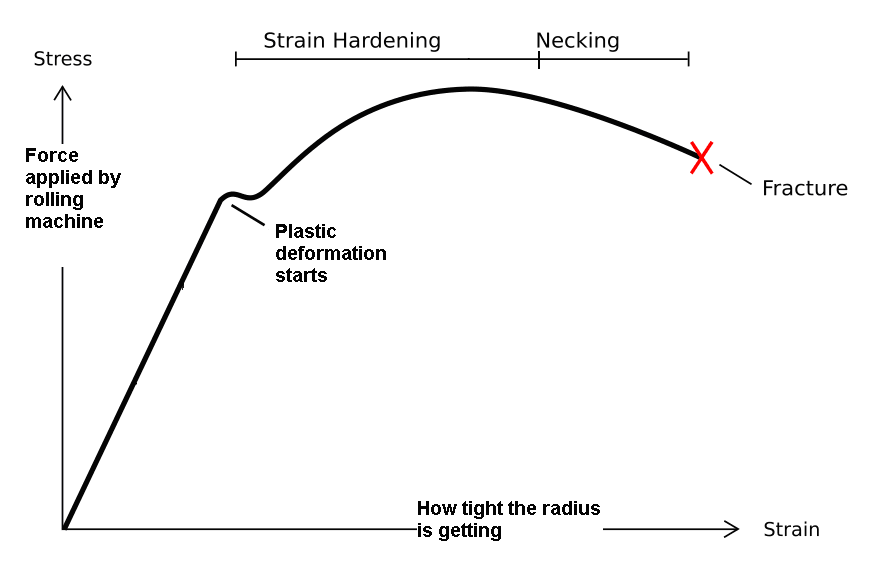There is not a mathematical formula for determining the minimum bending radius of steel sections. To better explain this, lets look at bar bending. Steel is curved using a cold-roll bending process. Steel sections are put into a section bender (also called an “angle roll”) with a three or four roll configuration. Rollers put force against the feed path to force the metal stock into a predetermined curved path. There is force applied by the rolling machine (stress) which in turn changes the structural steel into a curved shape (strain). If you look at the diagram below, steel is very ductile, and after a very brief elastic state the material goes into plastic deformation. The goal is to reach the desired radius without reaching the necking or ultimately the fracture point.
Looking back at the diagram above, the goal is to maximize the elongation limit in the bar bending process which is done by going with steel that is more ductile. A case study was done recently on bending 2.25 inch diameter round bar to a 3 inch inside radius. Two different material grades were used. The first was AISI 1144 which does not have a lot of ductility. The reason for this is 1144 is a free-machining material that has sulfur added to it to make it more brittle. It is made this way so when the cutting tool hits the sulfide inclusions, the material chips away easier. When bending 1144 to a 3 inch inside radius, the material was not able to withstand the stress and fractured. The second material type was Alloy 4140 HR which has a typical elongation of 25% vs. 1144 which has a typical elongation of only 10%. The 3 inch inside radius was successful without fracture using 4140. This case study better explains that the minimum radius is not the same for different material grades.








